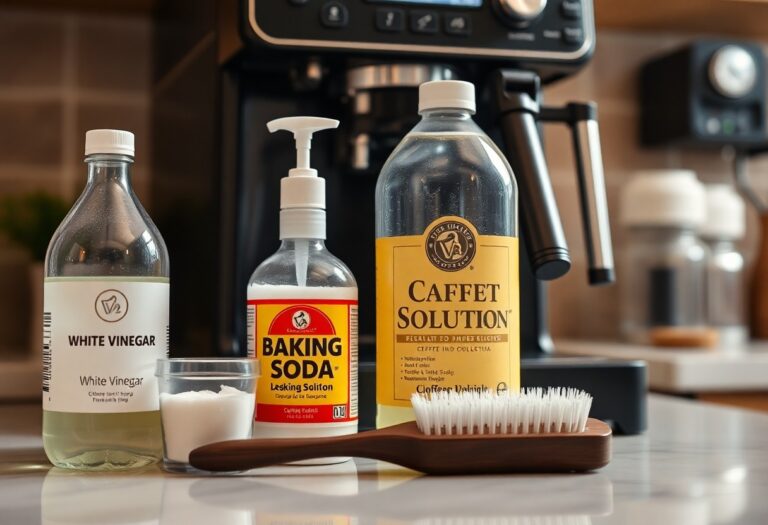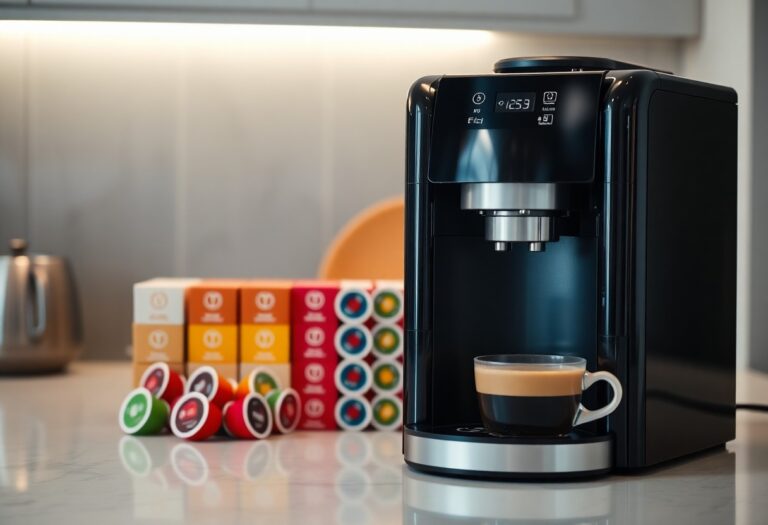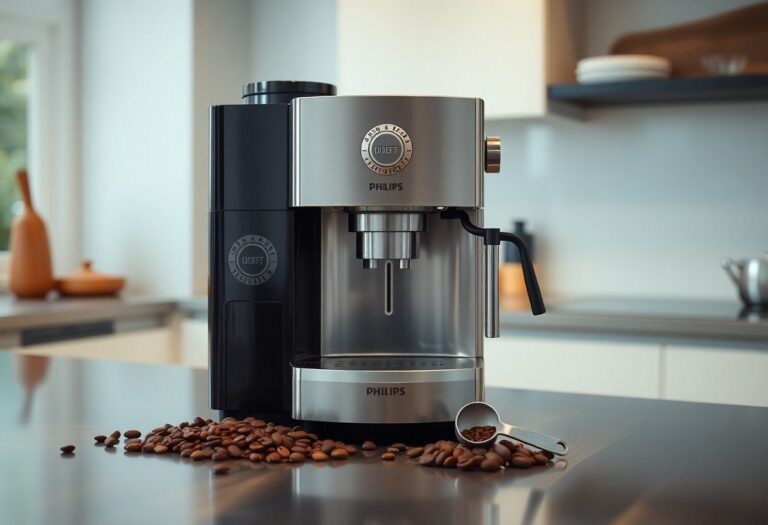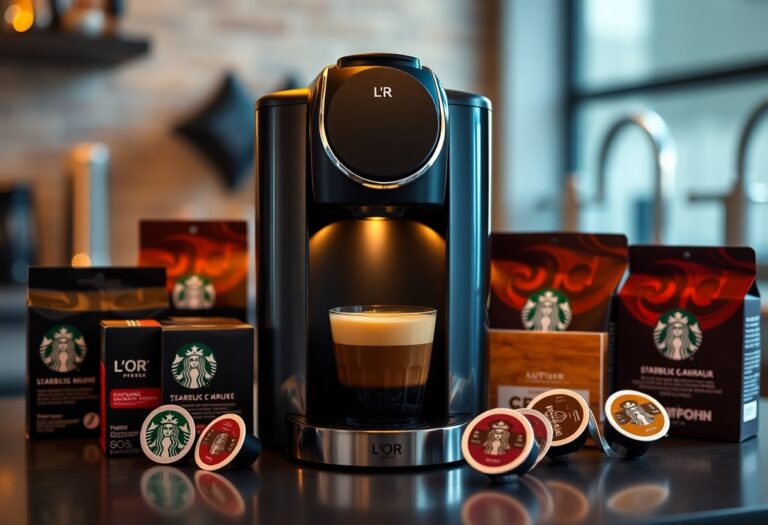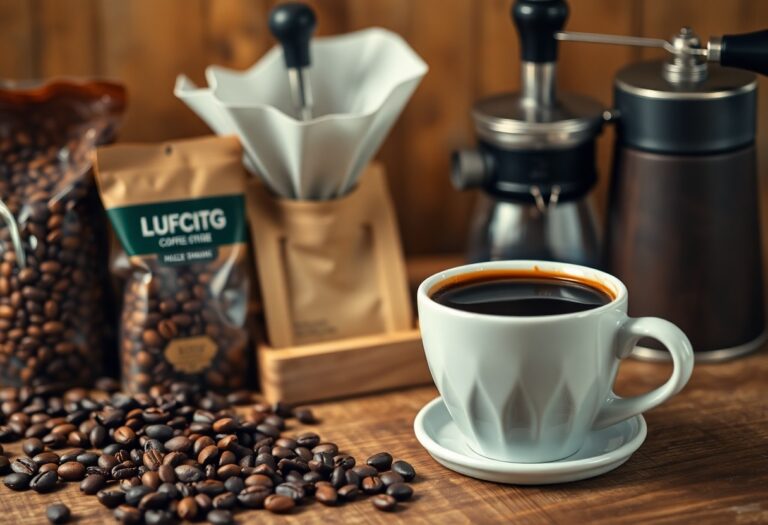What Coffee Do You Use in a Filter Coffee Machine – Filter Brewing
Coffee enthusiasts often ponder which grind and type of coffee are best suited for their filter coffee machines. Choosing the right coffee can significantly enhance the flavor profile of your brew, transforming your morning ritual into a delightful experience. Typically, you should opt for medium to coarse ground coffee to achieve optimal extraction. Look for fresh, high-quality beans that reflect your personal taste preferences, whether it’s a bold, dark roast or a lighter blend. Selecting the right coffee can truly elevate your filter brewing game!
Key Takeaways:
- Choose medium to coarsely ground coffee for optimal extraction in filter coffee machines.
- Use freshly roasted coffee beans to enhance flavor; aim for a roast date within the past few weeks.
- Consider the coffee blend – single-origin coffees often provide unique flavors, while blends can offer balanced taste profiles.
- Pay attention to the coffee-to-water ratio; typically, 1 to 2 tablespoons of coffee per 6 ounces of water is recommended.
- Experiment with brewing times and temperatures to find the best flavor profile for your palate.
Finding the Perfect Bean: What Coffee Works Best in a Filter Machine
Choosing the right coffee bean for your filter coffee machine can transform your morning cup into a rich and satisfying experience. Look for beans that are specifically roasted for filter brewing, ideally offering a balance of acidity and sweetness. Medium to dark roasts generally work best, as they highlight the nuanced flavors while avoiding overwhelming bitterness. Pay attention to the origin; certain regions produce beans that can give you that perfect cup.
Characteristics of Ideal Filter Coffee Beans
The ideal filter coffee beans exhibit a harmonious balance of flavor, aroma, and acidity. Beans that are too light may result in a sour cup, while overly dark roasts can lead to bitterness. Look for a medium roast that retains the natural characteristics of the bean, allowing fruity, floral, or even nutty notes to shine through without mask. A consistent grind size is also vital, as it ensures even extraction during the brewing process.
Popular Coffee Varietals for Filter Brewing
Several coffee varietals are particularly well-suited for filter machines, with the most popular choices including Arabica, Ethiopian Yirgacheffe, and Colombian Supremo. Arabica beans are known for their gentle acidity and complex flavor profiles, making them a staple for filter brewing. Ethiopian Yirgacheffe delivers vibrant floral notes with a hint of fruitiness, while Colombian Supremo is appreciated for its smooth yet bold character, boasting a well-rounded cup. Each of these varietals brings distinct qualities that can elevate your filter coffee experience to new heights.
Among the standout options, Arabica is often celebrated globally for its smoother and sweeter taste, making it ideal for filter brewing. Ethiopian Yirgacheffe offers a unique floral aroma that many coffee lovers find irresistible, showcasing bright citrus notes perfect for a refreshing cup. Colombian Supremo, on the other hand, is known for its body and consistency, making it a reliable choice for those who appreciate a fuller flavor. Experimenting with these varietals will allow you to discover the perfect brew that suits your palate best.
Grind Size Matters: Unlocking Flavor Potential
Utilizing the right grind size in your filter coffee machine can greatly enhance the flavors and aromas of your brew. A finer grind allows for quicker extraction of oils and essences, while a coarser grind slows the process, leading to different taste profiles. Mastering grind size may be the key to achieving the perfect cup. For more insights, check out How to Brew with a Drip Brewer.
The Science Behind Grind Size and Extraction
The extraction process in coffee brewing is influenced significantly by grind size. A finer grind increases the surface area, allowing water to extract flavors more rapidly. Conversely, a coarser grind reduces contact between the water and coffee, leading to a slower extraction. The balance between these two factors is necessary, as it directly impacts the strength and taste of your coffee.
Recommended Grind Sizes for Filter Brewing
For optimal flavor, a medium grind size is typically preferred in filter brewing. This grind allows for a balanced extraction time, ensuring that the coffee oils and flavors infuse properly without over-extracting bitter notes. Generally, coffee grounds should feel similar to granulated sugar in texture, providing a perfect compromise between fine and coarse grinds.
Medium grind is often ideal for filter brewing due to its balanced extraction capabilities. This size also works well across various filter methods, providing consistent flavor profiles while preventing under or over-extraction. If experimenting with coarser grinds, you may notice a lighter flavor, while a finer grind may deliver a stronger cup but risk bitterness. Testing different grind sizes can help you discover your personal preference and unlock the full potential of your chosen coffee beans.

Choosing Freshness: The Key to Flavorful Brew
Freshness plays an imperative role in your coffee’s flavor profile. Beans lose their zest over time, so opting for freshly roasted coffee ensures you enjoy the vibrant flavors and aromas that make each cup special. Selecting coffee roasted within the last two weeks provides the most robust tasting experience, as the natural oils and compounds remain intact, allowing you to savor the complexity of each sip.
The Role of Roast Dates and Packaging
Looking for roast dates on your coffee packaging is imperative for understanding how fresh your beans are. Ideally, select coffee that has been roasted no more than two weeks prior to your purchase. High-quality bags often feature a one-way valve to release gases while preventing air from entering, ensuring your beans remain flavorful for longer. This packaging allows the coffee to breathe while maintaining its freshness—your best bet for a rich brewing experience.
How to Store Beans for Optimum Freshness
Storing your coffee beans properly is key to maintaining their freshness. Keep them in an airtight container, away from direct sunlight, heat, and moisture. A cool, dark pantry is ideal, but a dedicated coffee canister with a CO2 valve can maximize flavor preservation. Aim to avoid the fridge, as temperature fluctuations can lead to staleness. Following these steps will ensure that each brew boasts the best possible flavor.
Utilizing an airtight container with minimal exposure to light and air can significantly prolong the life of your beans. Keeping them in a dark, cool environment helps to stabilize their imperative oils and prevent the degradation of flavor. Avoid frequently opening the container, as this allows moisture and air to seep in, accelerating staleness. Consider purchasing smaller quantities of coffee more frequently, ensuring you always have the freshest beans on hand for your filter coffee machine, ultimately elevating your brewing experience to new heights.
Brewing Techniques: Mastering the Art of Filter Coffee
To truly elevate your filter coffee experience, mastering various brewing techniques is vital. Factors such as grind size, water temperature, and brew time play critical roles in extracting the desired flavors and aromas. You can research deeper into What Type of Coffee Is Used In a Coffee-Maker? to understand how these elements affect the overall brew.
Water Temperature and Brew Time Optimization
Finding the sweet spot for water temperature and brew time can greatly impact the flavor profile of your coffee. Follow the guidelines in the table below:
| Water Temperature (°F) | Brew Time (minutes) |
| 195-205 | 4-6 |
| 185-195 | 6-8 |
| 205-215 | 3-5 |
Utilizing water that falls within the recommended range ensures optimal extraction of flavors. Adjusting the brew time based on your preferred coffee strength helps balance acidity and richness.
The Importance of Coffee-to-Water Ratios
A well-defined coffee-to-water ratio serves as the foundation for great filter coffee. Generally, a ratio of 1:15 to 1:18 is recommended, meaning for every gram of coffee, you should use 15 to 18 grams of water. This balance allows for proper extraction, preventing your coffee from tasting weak or overly bitter.
Fine-tuning your coffee-to-water ratio can suit your taste preferences perfectly. If you prefer a bolder cup, aim for the lower end of the range, and if you enjoy a milder flavor, lean towards the higher end. Experimenting with these ratios helps you discover your ideal cup, unlocking the full potential of your chosen beans and enhancing the whole brewing experience.

Common Mistakes: Avoiding Flavor Pitfalls
In the pursuit of the perfect cup of filter coffee, missteps can lead to disappointing flavors that mask the coffee’s inherent qualities. By identifying and avoiding common mistakes, you can enjoy a brew that truly reflects the unique characteristics of your chosen coffee beans, enhancing your overall coffee experience.
Missteps in Bean Selection and Preparation
Choosing the wrong type of beans or preparing them poorly can drastically affect your coffee’s flavor. Opting for stale or low-quality beans may result in a flat, lackluster cup. Freshly roasted beans are imperative, as is the right roast level for your taste preference. Additionally, insufficient or over-extraction during your grinding process can dilute the complex flavors waiting to be awakened in your coffee.
Brewing Errors That Ruin Your Coffee Experience
You can significantly impact your coffee’s flavor through various brewing errors, such as incorrect water temperature or over-brewing. Water that is too hot can scald the coffee, while too cool will under-extract, leaving your brew weak and uninspiring. The brew time also matters; exceeding the recommended duration can pull harsh flavors, overshadowing the delicate notes that make your chosen beans special.
Taking care to use water heated between 195°F to 205°F can prevent many common brewing pitfalls. Additionally, adhering to the ideal brew time—typically around 4 to 6 minutes for filter coffee—ensures that the extraction process highlights the beans’ best qualities rather than extracting unwanted bitterness. Regularly calibrating your brewing parameters according to the beans’ roast level and origin is a small but significant step toward transforming your filter coffee into an extraordinary experience that showcases its full flavor potential.
To wrap up
Considering all points, choosing the right coffee for your filter coffee machine is vital in achieving that perfect cup. Opt for medium to coarsely ground coffee made from high-quality beans, ideally with a flavor profile that suits your palate. You’ll want a grind size specifically tailored for filter brewing to ensure optimal extraction. Experimenting with different origins and roasts can enhance your coffee experience, so don’t hesitate to try new varieties. With the right selection, you can enjoy a delightful and aromatic brew every time.
FAQ
Q1: What type of coffee should I use in a filter coffee machine?
A: For a filter coffee machine, it is recommended to use medium to coarsely ground coffee beans. This grind size allows water to flow through the coffee grounds evenly, extracting optimal flavor without over-extraction, which can lead to bitterness. Most brands specifically designed for drip coffee makers will work well, so look for options labeled as ‘drip’ or ‘filter’ coffee.
Q2: How fresh should the coffee be for optimal brewing?
A: Freshness is key for the best flavor in your coffee. It is advisable to use coffee beans that have been roasted within the last 2 to 4 weeks. After this period, the flavor can diminish due to oxidation. When possible, buy whole beans and grind them just before brewing to ensure maximum freshness and flavor.
Q3: How much coffee do I need for a perfect brew?
A: A common guideline is to use about 1 to 2 tablespoons of coffee grounds for every 6 ounces of water. This can be adjusted according to personal taste preferences; if you enjoy a bolder coffee, consider using more grounds. It’s always a good idea to experiment with different ratios to find the strength that suits you best.
Q4: Are there specific coffee blends that work better for filter coffee machines?
A: While most coffee blends can work well in a filter coffee machine, those with medium roast profiles tend to highlight the balanced flavor. Examples include blends that feature notes of chocolate and nuts. However, personal preference plays a significant role, so feel free to try different origins and blends to discover what you enjoy most.
Q5: Can I use pre-ground coffee in my filter coffee machine?
A: Yes, you can use pre-ground coffee in a filter coffee machine. Just be sure to choose a pre-ground option that is specifically labeled for drip brewing, as this ensures the correct grind size for optimal extraction. While fresh-ground coffee typically tastes better, pre-ground coffee can still provide convenience and decent flavor.


